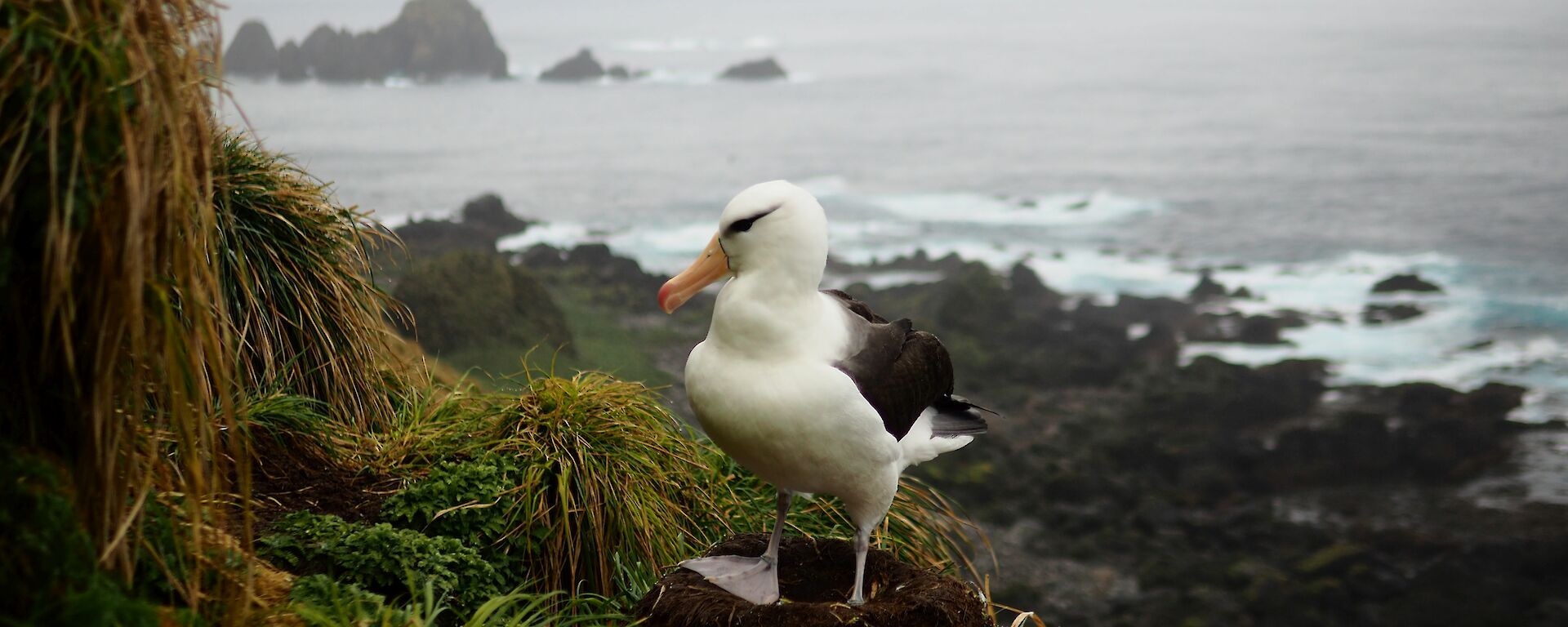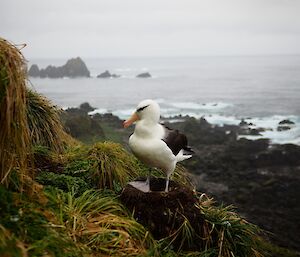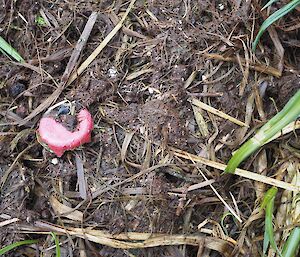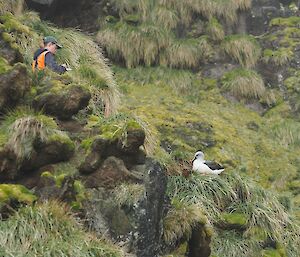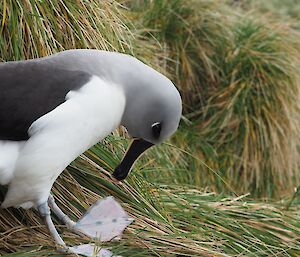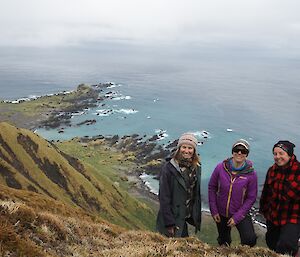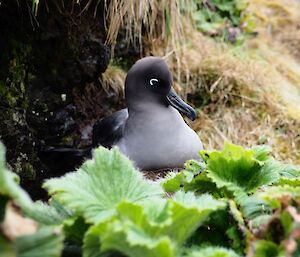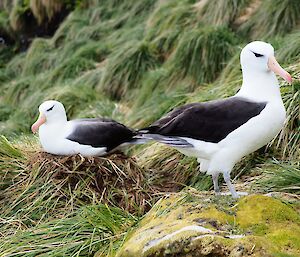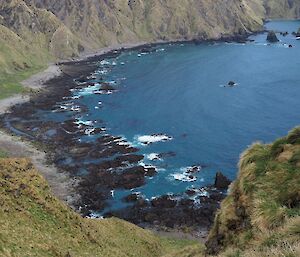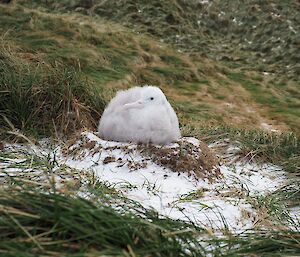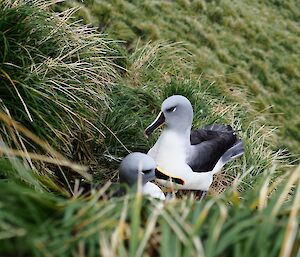Four species of albatross breed on Macca: wandering, grey-headed, black-browed and light-mantled sooty.
Wandering albatross have a longer breeding cycle than the other three species, laying eggs in December and chick fledging starting in November the following year. Most grey-headed and light-mantled sooty albatross tend to breed every second year following a successful breeding attempt, while black-browed albatross tend to breed every year. These three species have a shorter breeding season over the spring and summer, returning to the island in late September and chicks fledging between February and May.
This month, Macca Tasmanian Parks and Wildlife Service (TasPWS) Rangers and one extremely helpful Senior Field Training Officer spent the first half of November in the field monitoring the breeding populations of the grey-headed, black-browed and light-mantled sooty albatross in the south-west corner of the island.
This work involved searching for active nests (nests with eggs) and marking them so the summer wildlife ranger can come back in January and check whether a chick has hatched, and return at the end of summer to count how many chicks have survived to fledging.
Albatross populations throughout the Southern Hemisphere face a number of threats, including incidental mortality in fishing operations, disease, and changes to breeding success and food availability with climate change.
Marine debris may also impact populations. Albatross will regurgitate food for their chicks after foraging at sea and any indigestible material such as squid beaks and plastic may be regurgitated by the chick near the nest.
This season a plastic bottle cap from a water bottle was found at an old nest site, most likely fed to a chick by a parent. This isn’t the first time plastic fragments have been seen at albatross nests. In 2018, rangers observed plastic fragments being regurgitated by two albatross chicks.
Fortunately, plastic is not commonly found at albatross nests on Macquarie Island (unlike their Pacific cousins), however, each year we record all observations to monitor if this prevalence is changing.
Wildlife monitoring on Macca can be strenuous and time consuming work and couldn’t be achieved without the help of keen volunteers.
Thanks to all the Macca winter team who helped the Tas PWS Rangers this season, whether that was wading through the soaking featherbed, pushing up a tussock hill or swapping a slushy — we appreciate it!
Stella — Tasmanian Parks and Wildlife Service Ranger

